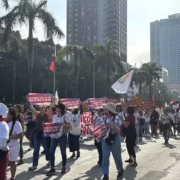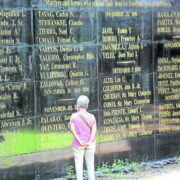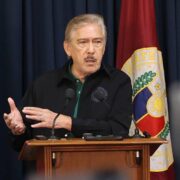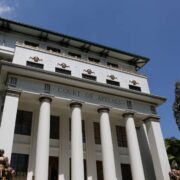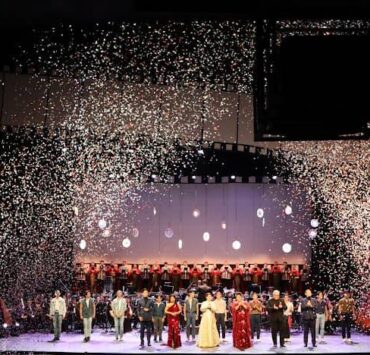A stirring staging of ‘Walang Sugat!’
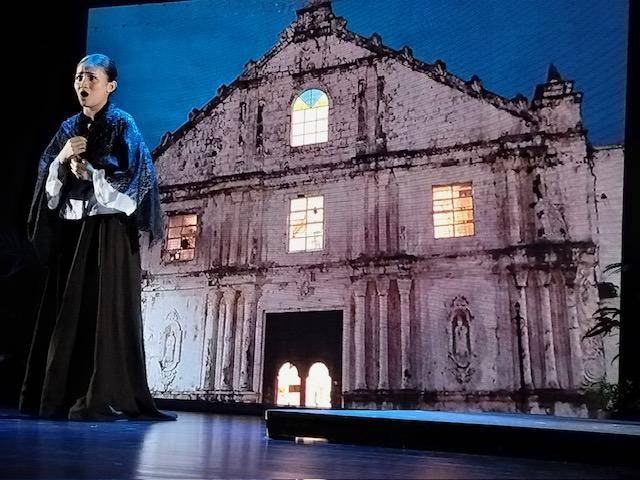
Severino Reyes’ patriotic sarswela, “Walang Sugat,” took center stage recently at the Benito Sy Pow Auditorium of the University of the Philippines (UP) College of Architecture, in celebration of the UP College of Music’s Abelardo Hall auditorium’s 61st anniversary. The presenters were the UP Office of the Chancellor, UP College of Music, Office for Initiatives in Culture and the Arts, and the College of Architecture.
It ran for two gala nights and two matinees, with a special staging dedicated to Maestra Irma Enrile-Potenciano, a veteran sarswelista as well as operatic singer, on Nov. 27. National Artists for Music Dr. Ramon Santos and Fides Cuyugan-Asensio graced this special presentation, together with some voice faculty members and students from the University of Sto. Tomas.
With Fulgencio Tolentino writing the music, “Walang Sugat” was dubbed “seditious” during the American period as it advocated resistance to colonial rule and the eventual attainment of independence. As a musical play, the sarswela in the past was a potent tool for stirring love of country. Written in 1898 and set in the context of the Philippine revolution in 1896, it was first performed in 1902, during the decade of what nationalist historian Teodoro A. Agoncillo dubbed the “Era of Suppressed Nationalism.”
Its music was completely lost during the Japanese occupation, and was “reconstructed” through the combined efforts of Mike Velarde Jr. and Constancio de Guzman, who drew information by interviewing persons who watched its production. The former is associated with the love song “Dahil sa Iyo,” and the latter with the stirring nationalist kundiman, “Bayan Ko.” Both have become famous songs.
Restaging
Following its musical reconstruction and additional musical compositions, it was restaged in 1971 at the Cultural Center of the Philippines, and was followed with more productions.
Its story revolves around the young lovers Tenyong and Julia. He joins the Katipunan in denouncing Spanish colonialism, leaving Julia, whose mother wants her to be married to Miguel, son of a wealthy man. On their wedding, Tenyong, “wounded,” comes back, and begs Julia to marry him; after all, he is about to die. The priest officiates the wedding, and when done, Tenyong stands up, unwounded—“Walang sugat!”—to the surprise of everyone.
Despite budgetary constraints, it was the intelligent handling of its director, Dr. Alegria Ferrer, that gave the most recent version a tight unfolding of the three-act plot into a single coherent one.
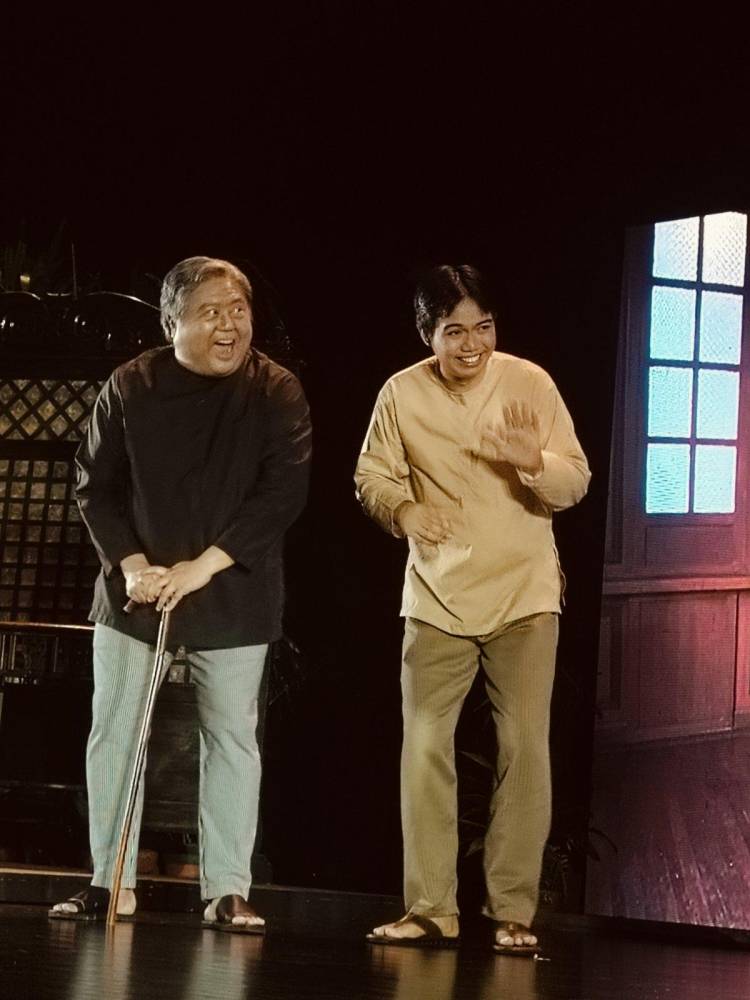
Maestro Josefino “Chino” Toledo arranged the music for the Padayon Rondalla and collaborated on the piano with Dr. Michelle C. Nicolasora. The scenery was vividly done through screen projection by Jun Sepe. Ferrer ensured effective lighting, which she herself handled.
The acting went well. Diction was clear even as the characters—played by millennials—met the challenge of speaking pure (dalisay) Tagalog. And the singing was handsomely done—and why not, many of them were voice students from the UP College of Music.
Highlights of their singing were heard in the the first act. Liz Fortun sang the stirring kundiman “Bayan Ko.” Preceding it were the duet of Julia (Daniela Sibal) and Tenyong (Al Gatmaitan), “Huwag mong Silaban.” “Ako’y Hindi Duwag“ was superbly sang by Nelson Borongan Jr. (playing Lucas), and in the final act number, “Masayang Liwayway,” Sibal disclosed the vibrant sheen of her voice.
The other cast members were Raymond Leslie Diaz, Roxanne Abuel, Clarisse del Rosario, and Samuel Silvestre.
Magnificent trio
At the residence of Irene Marcos-Araneta, chamber music was championed by a formidable trio composed of John-Henry Crawford, cello; Diomedes Saraza Jr., violin; and Victor Asuncion, piano.
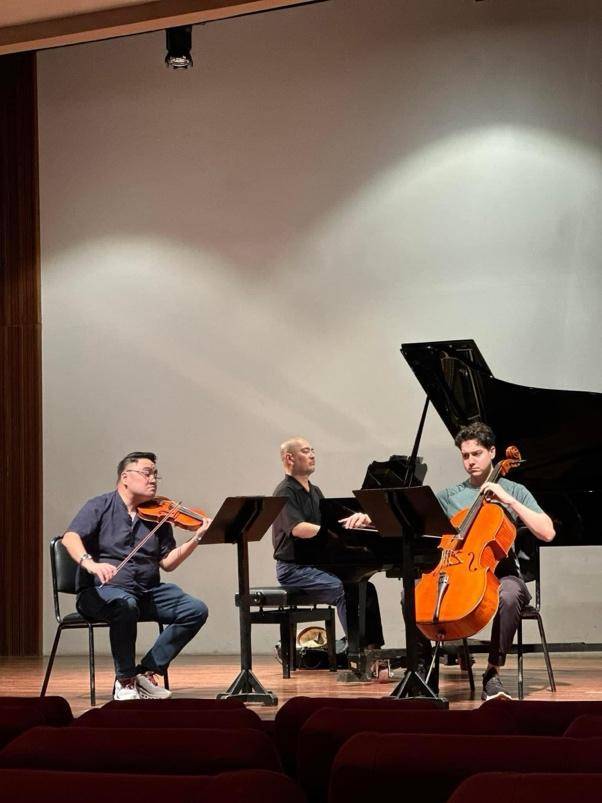
Chamber music reigned supreme as the three musicians of undisputed solo caliber forged a magnificent trio that was ardently savored by a select audience. In the program were Brahms B Major Piano Trio, first movement; (the Mendelssohn’s D Minor Piano trio (first movement), and some solo pieces played magnificently by each of the performers.
Notable was the forging of an intimate rapport among them. Catching them play the Mendelssohn opus, straight from the matinee presentation of “Walang Sugat,” one was highly impressed by the sterling collaboration they forged with each other. It was the dynamic fusion of their soloist caliber that marked a subtle rendition of the piece’s first movement.
Their virtuosity was all the more revealed when each of them played solo works.
Crawford played two solos and stunned the listeners with his electrifying playing of Astor Piazzola’s “Le Grand Tango.”
Saraza awed his listeners with his interpretation of Massenet’s familiar “Meditation” from Thais, and wowed the audience with the familiar ditty “Dahil sa Iyo,” which he dedicated to Imelda Marcos, who graced the intimate audience.
Finally, Asuncion, the leader of the chamber group, mesmerized the audience with his playing of Debussy’s dreamy “Claire de Lune.”



